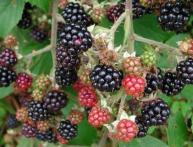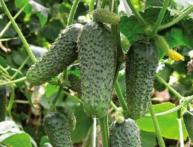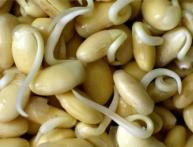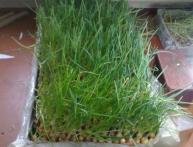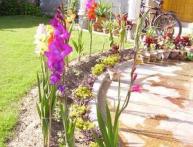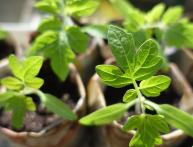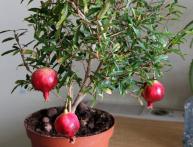Rhubarb in the photo is a perennial plant
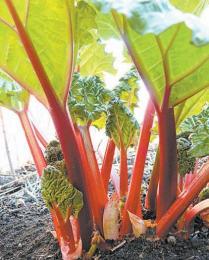
The rhubarb in the photo is a perennial plant with a large rhizome; large leaves sit on long thick petioles. The petioles can be up to 80 cm long, up to 4 cm thick and weigh up to 1 kg and the color varies from green to red with varying depths of color. These features depend on the type of rhubarb. Rhubarb belongs to the buckwheat family. Its homeland is East Asia, where its properties were known even before our era. But it came to Europe only in the 18th century.
Rhubarb is a cold-resistant plant. It tolerates a shaded place well, as it does not need abundant sunlight, but it cannot tolerate drought. It requires moist soil. Even a slight drought has a bad effect on the leaf rosette; the leaves are weak, and the petioles lose their juiciness and become rough and fibrous.
The petioles of rhubarb are used to eat vegetables.. In terms of taste and nutritional characteristics, they resemble an apple. They contain organic acids, pectin, mineral salts and vitamins, which are so beneficial for human health.
Rhubarb in the photo ripens quickly and is ready to eat in May. When there are still so few fruits and vegetables. It is used to prepare compotes, jelly, pie fillings, kvass, juice and wine.
Traditional medicine uses rhubarb as a diuretic and laxative. Increases appetite, participates in liver cleansing and helps prevent vomiting.
In the same place, rhubarb can grow for up to 10 years and produce a good harvest of petioles.Plant it in fertile soil with low groundwater. Apply organic fertilizer before planting, 2 - 3 buckets of manure or compost per square meter. In the second year, the plant develops uterine stems, which greatly deplete it. They must be removed. Every 3 years, add organic matter at the rate of 1 - 2 buckets per square meter.
Reproduction made by seeds or vegetatively, that is, by dividing the roots.

